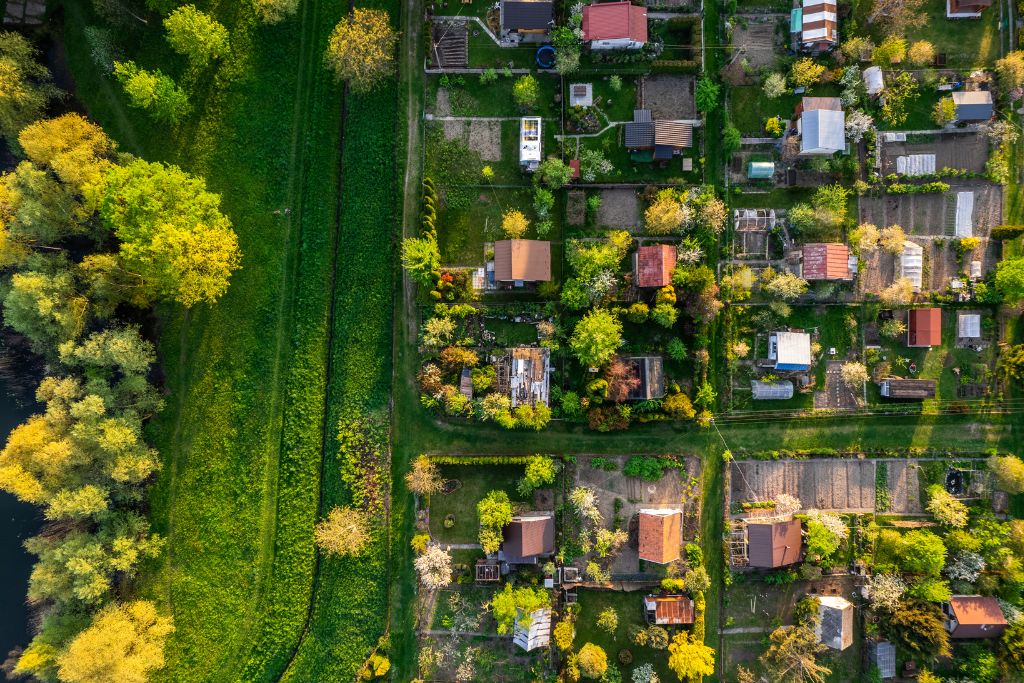Well-planned landscape architecture is essential in urban environments, where residents often lack places to enjoy nature, breathe fresh air and exercise outdoors. But landscape architects are also increasingly focused on urban resilience – or the ability of a city and its institutions to thrive despite constant changes and the threats of natural and human-caused disasters.
—
A city designed for urban resilience has a built-in capacity to maintain its stability and recover quickly from unexpected events. Some of the biggest challenges facing modern cities include climate change, population growth, resource scarcity, and air pollution.
Landscape architects can develop solutions that address many of these issues while focusing on urban resilience and sustainability. A critical role of landscape architecture is creating pleasant places where people want to spend time and encourage others to join them. However, those designing these purposeful public spaces must also ensure they do not negatively affect ecosystems and they can withstand the challenges of the future. Otherwise, parks and other planned outdoor spaces could bear the adverse consequences of events such as floods, wildfires, and extreme heat.
Some urban resilience specialists are also identifying ways to restore already damaged ecosystems. In Barranquilla, Colombia, planners are tackling the pollution in Leon Creek, which runs through the city’s center. Participants are reviving some 600 hectares of swampland that creates a natural barrier between the sea and the city, protecting its inhabitants against impending rising ocean levels. This effort involves planting more than 250,000 trees and creating more than 200,000 square meters of public space, according to the UN Environment Programme.
The Role of Landscape Architecture
Landscape architecture combines science, design, architecture, engineering and art to create sustainable public spaces for everyone to enjoy. Numerous aspects increase the appeal of these public space projects – from intentional design, clear signage and well-maintained natural features to safety features like good lighting and handrails. Community events like classes or festivals as well as programs and amenities that promote connection with nature are also key.
Landscape architecture can also improve the lives of people living along city streets. Teams associated with a non-profit organization in Portland, Oregon, planted 49,246 trees along city streets between 1990 and 2019, tracking when and where they planted each one. When researchers published the results in 2022, they found each tree caused a 20% reduction in non-accidental mortality rates and a 6% decline in cardiovascular deaths. Additionally, researchers found the association strengthened as the trees grew, highlighting the importance of preserving existing urban trees whenever possible.
You might also like: How Cities Are Bracing For More Heat
Case Study: Munich, Germany
Researchers performed work centered on urban spaces in Munich, Germany, and how various aspects affect the surrounding flora and fauna. They examined 103 public squares and assessed factors such as the size, amount of artificial light, and abundance of plants, trees and grassy areas.
The results, published in late 20204, varied tremendously depending on whether landscape architects opted for more enclosed spaces or for open and park-like space. One location in the former category had only 20 species counted, while another with numerous bushes, hedges, and trees contained 156.
Almost all identified species benefited from grassy spaces because they contain soil organisms that birds and hedgehogs eat. However, some variations existed, with particular species enjoying the city center’s heat and others finding refuge in its cooler outlying areas.
Rather than applying the same urban landscape architecture principles to every location by following a set pattern, the team recommended that professionals maximize biodiversity benefits by accounting for local conditions and species’ needs.
Intentional choices can attract wildlife and make these destinations more pleasant and interesting for humans. That is especially true if some take advantage of the educational opportunities of sharing spaces with the area’s creatures and plant life.

Designing Sustainable Public Spaces
As planners design public space projects, they learn how strategically included elements can have major payoffs. For example, statistics show green roofs offer a 224% return on investment. They also last longer than conventional roofs and can be simple to maintain, depending on the type. These additions are ideal for promoting urban resilience because they can reduce greenhouse gas emissions and air pollutants.
Similarly, green walls let landscape architects take advantage of vertical space. Some innovators are making it easier than ever to integrate these into public urban spaces.
One example comes from a German-Austrian team that developed modular green walls weighing under 50 kilograms per square meter, which allow people to add or remove plants attached to panels. In addition to bringing green walls to areas lacking suitable architecture, this method lets planners choose greenery depending on how much sun an urban spot receives.
Permeable pavements and rain gardens promote urban resilience and sustainability, too. Both options reduce stormwater runoff, while rain gardens are low-maintenance spaces that attract wildlife.
Indian officials in Hyderabad, the capital and largest city of the Indian state of Telangana, believe installing permeable pavements in public areas will address Greater Hyderabad’s groundwater depletion problem. Last year, they announced a pilot project involving a public sidewalk. If authorities deem that effort successful, they may require all new paved areas to include permeable materials. The upcoming project also sources surface materials from recycled construction and demolition waste, allowing participating locations to engage in the circular economy.
Case Study: New York City
Rising population growth can prevent urban residents from easily accessing public spaces. However, a project led by the New York City Department of Transportation highlights how the most sustainable way to invest in urban resilience may be to establish partnerships that share the duties of keeping these locations welcoming and functional.
Authorities launched a first-of-its-kind pedestrian plaza program in 2009 catering to people living in neighborhoods with insufficient public spaces. The authors of a 2023 study examined the outcomes of five plazas in Brooklyn and Queens. In these instances, Department of Transportation officials bear responsibility for designing and building the plaza, while partner organizations manage and maintain these locations. Additionally, the first plaza-creation phase relies on community input, and planners ask the public for their opinions on proposed ideas.
Residents stay involved through later phases, too, such as by attending workshops or becoming community board members. However, it is also true that objections to ongoing plans may delay or cancel these efforts. The researchers mentioned instances where some residents raised concerns about potential gentrification or the loss of parking spots in heavily trafficked areas.
Another challenge arose when the early phases of a planned plaza included sturdy, heavy umbrellas, but the urban architects used lighter, more breakable ones. When one fell on and injured someone who filed a lawsuit, the plaza’s sponsor organization determined the best solution was to remove most umbrellas.
These examples show how landscape architects’ decisions may evolve due to community member input, unexpected shortcomings and other challenges. Being flexible when these issues arise is an excellent way to overcome them. Additionally, people who feel strongly about public space development should consider directly participating to ensure planners hear their feedback.
Community Engagement and Participation
The New York City case study emphasizes the importance of encouraging residents to get fully involved in the planning and creation of new public spaces. Public opinions can also illuminate areas planning officials have overlooked. In one case, a Florida resident last year began raising funds and educating people about the need for an all-inclusive playground. She contacted city officials to see if the area had any accessible playgrounds for her son with cerebral palsy. The woman soon discovered all those sites comply with the Americans With Disabilities Act, but none have equipment fully accessible to people who use wheelchairs or prosthetics.
Frequent, early and ongoing public input that enables participatory design significantly reduces the likelihood of costly oversights that require extensive rework or cause unfavorable press coverage from upset residents. Urban architects, city authorities and others must reduce potential barriers to public participation, for example by scheduling meetings, distributing surveys online or through door-to-door visits, and allowing people to give feedback anonymously if desired.

Challenges and Opportunities
Even as many people recognize the importance of sustainable public spaces, they acknowledge potential barriers, such as a lack of funding and difficulty navigating policy and regulation-related barriers. However, these obstacles also create opportunities for like-minded parties to work together, pooling knowledge and resources to achieve the best outcomes.
An example of the benefits of public-private partnerships comes from Texas and the non-profit Houston Parks Board, which has elevated publicly accessible spaces since 1976. The Bayou Greenways initiative is its largest effort yet, made possible with contributions from the Kinder Foundation, the City of Houston and the Houston Parks Board. It built and linked more than 150 miles of biking and walking trails. These changes facilitate access to more than 3,300 acres of green space bordering the city’s bayous.
Urban resilience also requires considering how to equip new or existing public spaces for the future. North Carolina officials did that by installing solar-powered electric vehicle chargers in three of its Raleigh parks. These models’ portability is one of their most convenient aspects. Since they do not require extensive electrical site work, authorities can easily move them to different locations depending on usage trends.
The Future of Sustainable Public Spaces
Landscape architecture is an exciting, emerging field. A showcase of new projects from Clemson University students studying the topic provided an exciting snapshot of current priorities. These included preserving native plant life; encouraging low-impact nature enjoyment; incorporating landscape-based water management; preserving historical sites when possible; and promoting gender equity in the built world.
Evolving policies and strong governance that support sustainable urban development are critical to upholding these priorities. Concerned community members can influence the future by signing petitions, contacting their local representatives and attending planning meetings.
Case Study: Chinese Cities
Researchers examined the long-term effects of China’s plans to bring more landscape architecture to its city centers, restoring the urban green spaces that development decisions had removed.
They analyzed two decades of satellite data from 974 Chinese cities to measure the change and looked for five examples of vegetation dynamics, including greening, browning and reversal.
Although the data revealed that rapid urban expansions caused browning in the studied areas before 2011, the years after that demonstrated a recovery – more than 63% of the cities showed increased greening, and less than 15% had continuous browning. There was even continuous greening occurring in approximately 8% of the cities, indicating the prolonged benefits of these conscious efforts.
Researchers noted that China’s national development strategies before 2011 centered on rapid urbanization. However, the decisions after that emphasized urban sustainability and created high-quality communities. Some of the most recent changes correlated with an increase in parks and a decrease in industrial zones, affecting urban cores.
The study highlights how it is never too late to reverse urbanization changes that reduce greenery and sustainable public spaces, and national and local authorities are among those best positioned to cause lasting improvements.
Increased Usage Encourages Further Development
Those who appreciate the urban green spaces in their area can influence decision-makers by regularly visiting those locations and encouraging others to do the same. Getting even more involved, such as volunteering at parks or attending special events, encourages local authorities to allocate ongoing investments to these efforts and incorporate community feedback.
This story is funded by readers like you
Our non-profit newsroom provides climate coverage free of charge and advertising. Your one-off or monthly donations play a crucial role in supporting our operations, expanding our reach, and maintaining our editorial independence.
About EO | Mission Statement | Impact & Reach | Write for us














